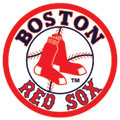How Green Is That … Baseball Stadium?
 The Natural Resources Defense Council has made major strides in greening America’s favorite pastime through its Major League Baseball (MLB) Greening Program. Stadium upgrades include improved energy efficiency, concession operations, water use, recycling and cleaner transportation.
The Natural Resources Defense Council has made major strides in greening America’s favorite pastime through its Major League Baseball (MLB) Greening Program. Stadium upgrades include improved energy efficiency, concession operations, water use, recycling and cleaner transportation.

The Miami Marlins‘ new stadium became the first retractable roof facility in the world to flaunt LEED Gold environmental certification this past May. Low-volatile organic compound paints and flooring improve indoor air quality and waterless urinals save up to six million gallons of water a year. During construction, 98% of waste was diverted to recycling centers.

Fenway Park, home of the Boston Red Sox, turns 100 this year, and it’s never been more eco-friendly. Trash barrels have been replaced by compactors that collect six times as much refuse, and rooftop solar panels behind home plate cut park fuel use by 37%. In the 2008 season, a group of local college students known as the Poland Spring Green Team recycled over 25 tons of plastics left in the stands.

The New York Yankees Yankee Stadium has efficient lighting fixtures that shave 207,000 pounds of CO2 emissions from every night game—the equivalent of planting one tree for each pitch of the home season. Natural cooling in Great Hall has slashed enough energy for 10,000 NYC apartments to run A/C on a summer day and 8,879 gallons of cooking oil has been recycled for biodiesel.

This past March, the Cleveland Indians installed a 3,000-pound corkscrew-shaped wind turbine on Progressive Field. Fans can pitch in on the turbine’s power generation by pedaling on stationary bikes installed around the ballpark.

